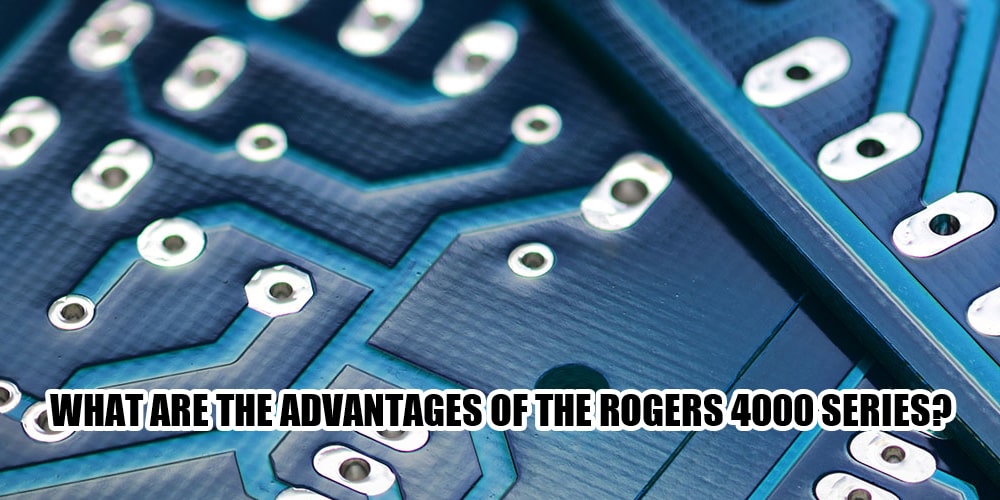What are the advantages of the Rogers 4000 Series?
20 January 2025
Views: 450
Rogers RO4000 series materials are high-performance materials commonly used in high-frequency and microwave applications. So what are the advantages of Rogers RO4000 series materials and what fields are they suitable for application?

What is Rogers 4000 series?
Rogers RO4000 hydrocarbon ceramic laminate and prepreg are low-loss materials that are easier to use in high-frequency microwave PCB manufacturing and have better stability than traditional PTFE materials.
Advantages of Rogers RO4000 Series Materials
- Compatible with FR-4 manufacturing process
- With UL 94 V-0 flame retardant rating
- High thermal conductivity (.6-.8 W/m.K)
- Stable dielectric constant (Dk) 2.55-6.15
- Glass transition temperature (Tg) over 280°C
- Compatible with lead-free soldering process
- Low Z-axis CTE, ensuring high reliability plated through holes
- Compliant with RoHS and REACH environmental regulations, no hazardous substances
- High cost performance
Applications of Rogers RO4000 Series Materials
In base stations, satellite communications, wireless networks, radars, automotive electronics and other equipment, high frequency, low dielectric constant and low dielectric loss and stability for signal transmission make Rogers 4000 Series materials the best choice
Rogers RO4000 Products
RO4000® LoPro®: Standard RO4000® can be paired with reverse copper foil, low Dk and low loss for high frequency circuit design, reducing passive intermodulation (PIM) performance.
RO4003C™: For cost-sensitive microwave/RF designs; Dk 3.38 (+/- 0.05); lowest loss characteristics of the RO4000® products; Df 0.0027@10 GHz.
RO4350B™: UL 94 V-0 flame retardant rating; Dk 3.48 (+/- 0.05); Df 0.0037 @ 10 GHz.
RO4360G2™: RoHS certified; low Z-axis CTE; Dk 6.15 (+/- 0.015); Df 0.0038 @ 10GHz.
RO4400™/RO4400T™ Series Bond Sheets: Based on RO4000 Series prepreg materials; supports multiple continuous laminations; lead-free soldering; provides thinner thickness options; improves multi-layer design flexibility.
RO4500™: Commercial high-capacity antenna-grade series materials; excellent mechanical properties; can be paired with LoPro™ copper foil; improves passive intermodulation.
RO4700™: Low Dk antenna-grade materials; Dk includes: 2.55 (+/- 0.05) and 3.0 (+/- 0.05); Df is: 0.0022 @ 2.5GHz and 0.0023 @ 2.5GHz respectively.
RO4830™: Low cost; suitable for mmWave patch antenna designs; similar insertion loss to RO3003™ laminates using standard electrolytic copper at 77 GHz; spread glass fabric; minimizes Dk variation.
RO4835™: 10x the oxidation resistance of traditional thermoset materials; Dk 3.48 (+/-0.05); Df 0.0037 @ 10 GHz.
RO4835T™: Thinner RO4835™; Spread glass cloth: Reduces Dk variation.
CU4000™ and CU4000 LoPro® copper foil: IPC-4562A Class 3 copper foil; High ductility; Makes multi-layer PCB alignment easier.
Conclusion
Compared with traditional PTFE materials, Rogers 4000 series is easier to use in high-frequency microwave PCB manufacturing and has better stability. It is very suitable for use in base stations, satellite communications, wireless networks, radars, automotive electronics and other equipment.
